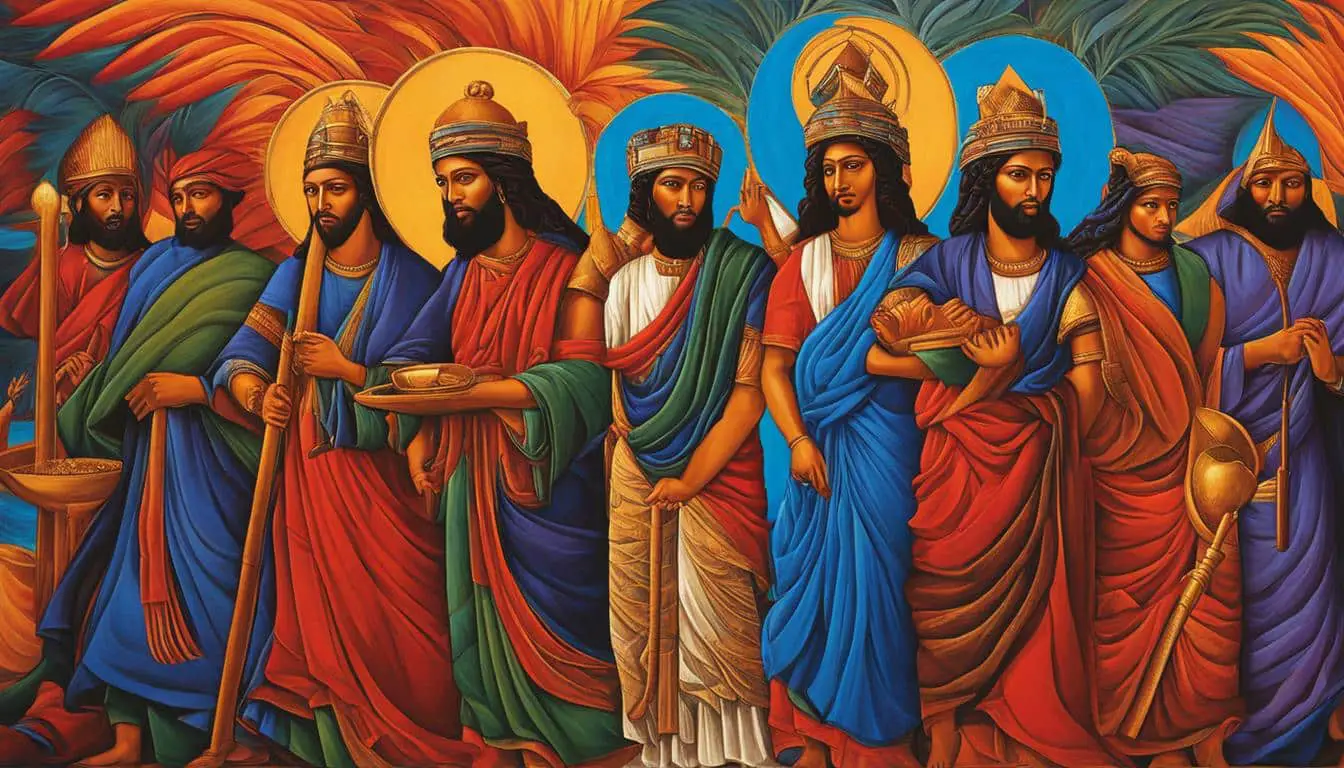
The Bible holds a significant position for Christians worldwide, but it’s important to acknowledge that culture heavily influences our understanding of biblical teachings. Biblical figures, such as Jesus, Moses, and others, have had a profound impact on history and continue to shape popular culture. Exploring their significance within their historical and cultural contexts can provide valuable insights into their true teachings.
Key Takeaways:
- Biblical figures have a lasting and profound influence on society and culture.
- Interpreting biblical stories requires considering the cultural context in which they were written.
- Understanding cultural differences can help us avoid misinterpretations and uncover the intended messages of biblical figures.
- Biblical figures can inspire diverse interpretations of the gospel, reflecting the rich tapestry of human cultures.
- By recognizing our own cultural biases, we can embrace the transformative power of biblical teachings and apply them to our modern lives.
The Influence of Biblical Figures on Values and Traditions
Biblical figures have played a significant role in shaping values and influencing traditions throughout history. Their stories and teachings have left an indelible mark on societies around the world, inspiring moral principles and cultural practices. From prophets and kings to disciples and apostles, these biblical characters have become cultural icons, revered for their impact on society and their enduring relevance.
One example of a biblical figure that has greatly influenced values and traditions is King David. Known for his bravery, wisdom, and devotion to God, David is often regarded as a symbol of leadership and righteousness. His story is not only celebrated in religious texts but also in literature, art, and music. The biblical character of David has inspired countless individuals to strive for greatness, to lead with integrity, and to seek a deep connection with the divine.
Another biblical figure whose influence on values and traditions cannot be overstated is Jesus Christ. As the central figure of Christianity, Jesus’ teachings on love, forgiveness, and compassion have shaped the moral fabric of Western civilization. His selfless sacrifice and unwavering faith continue to inspire individuals to live lives of service and humility. The impact of Jesus’ life and teachings can be seen in countless cultural expressions, from art and literature to social justice movements and humanitarian efforts.
It is important to recognize that the influence of biblical figures on values and traditions extends beyond religious circles. Their stories and teachings have permeated popular culture, shaping societal norms and ethical frameworks. Whether it is the idea of “turning the other cheek” or the concept of the “Good Samaritan,” biblical characters have provided inspiration and guidance for individuals of different faiths and beliefs.

Table: Examples of Biblical Figures and Their Cultural Significance
| Biblical Figure | Cultural Impact |
|---|---|
| Abraham | Symbol of faith and obedience |
| Moses | Leader and lawgiver |
| Mary | Model of purity and devotion |
| Paul | Influential theologian and missionary |
Reading the Bible Across Cultural Differences
When it comes to reading the Bible, we must recognize that it is a cross-cultural experience. The text we engage with is ancient Jewish literature, which carries with it cultural assumptions that may differ from our own. While modern translations strive to bridge the gap between ancient languages and contemporary readers, it is important to acknowledge the cultural lens through which the biblical authors wrote.
Awareness of ancient cultural assumptions can greatly enhance our understanding of the Bible. The biblical authors held beliefs that may not align with our modern worldview. For example, they saw spiritual reality as foundational to the material world, emphasizing the interconnectedness of individuals in a collectivist paradigm. They operated within an honor-shame culture that influenced social hierarchies, and they had a nuanced understanding of ritual purity.
While we may find empathy in certain aspects of their culture, it is essential to acknowledge the differences between their ancient context and our modern culture. By addressing our cultural blind spots, we can better grasp the intended message of the biblical authors and allow their words to challenge and transform our own cultural perspectives.
FAQ
How do cultural assumptions influence our understanding of biblical teachings?
Cultural assumptions can heavily influence our understanding of biblical teachings by shaping our interpretation of the text. For example, in the story of Jesus and the woman at the well in John 4, Western culture often misinterprets her multiple husbands as promiscuity. However, in the Eastern understanding of the time, divorce was not possible for women, and she had been abandoned by her previous husbands. Jesus’ message was about his unwavering love and the eternal fulfillment he could provide, not her supposed promiscuity.
Why is it important to consider cultural diversity in interpreting and spreading the gospel?
The event of Pentecost in Acts 2 demonstrated that the Holy Spirit enabled people from different languages and cultures to understand the Word of God. This highlights the importance of cultural diversity in interpreting and spreading the gospel. Recognizing and embracing diverse interpretations that arise from different cultural contexts can enrich our understanding of the gospel and ensure its relevance to people from various backgrounds.
How does cultural context shape our understanding of biblical figures and their messages?
Cultural context plays a significant role in shaping our understanding of biblical figures and their messages. For example, the confession that “Jesus is Lord” carried different connotations for Jews and Gentiles in the early church. For Jews, it emphasized Jesus as the Lord of the Old Testament, while Gentiles related it to their worldly rulers. Understanding these cultural variations within the early church can enhance our appreciation of how biblical figures inspire different cultural understandings of the gospel.
How does reading the Bible involve engaging with ancient Jewish literature?
Reading the Bible is a cross-cultural experience because it involves engaging with ancient Jewish literature. Although modern translations aim to bridge the gap between ancient languages and contemporary readers, cultural assumptions still permeate the text. Recognizing the cultural lens of biblical authors can enhance our understanding. Ancient ideas, such as a view of spiritual reality as foundational to the material world, a collectivist paradigm emphasizing interconnectedness, an honor-shame culture influencing social hierarchies, and a nuanced understanding of ritual purity, shaped the biblical authors’ perspectives.
Why is it important to acknowledge the differences between ancient cultural context and our modern culture when interpreting the Bible?
While we may empathize with certain cultural aspects found in the Bible, it is crucial to acknowledge the differences between their ancient context and our modern culture. By addressing our cultural blind spots, we can grasp the intended message of biblical authors and allow their words to challenge and transform our own cultural perspectives. This helps us to ensure that our interpretation aligns with the true biblical teachings and avoids imposing our own cultural biases onto the text.








